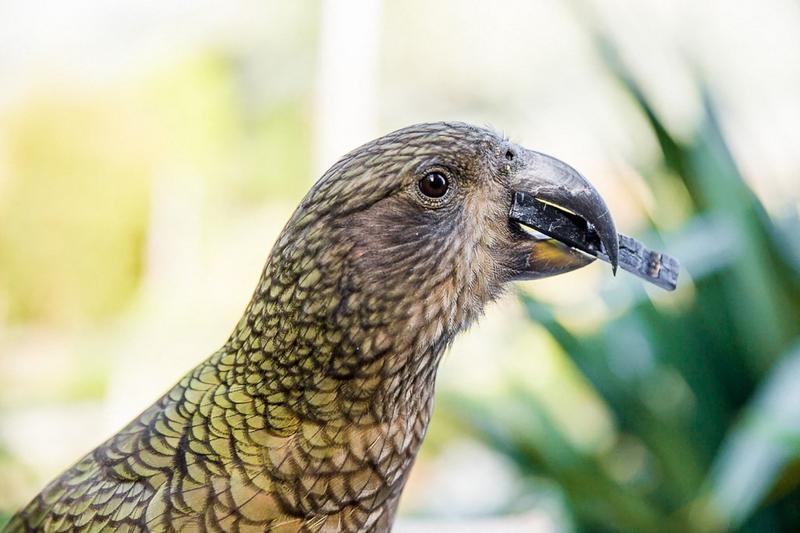 This handout photograph taken in 2019 and released by Amalia Bastos Photography on March 3, 2020 shows a Key, a species of large parrot native to New Zealand, during a series of experiments to test the statistical understanding of the birds, a variation of those already performed with apes and human infants at the Willowbank Wildlife Reserve in Christchurch. (AMALIA BASTOS / AMALIA BASTOS PHOTOGRAPHY / AFP)
This handout photograph taken in 2019 and released by Amalia Bastos Photography on March 3, 2020 shows a Key, a species of large parrot native to New Zealand, during a series of experiments to test the statistical understanding of the birds, a variation of those already performed with apes and human infants at the Willowbank Wildlife Reserve in Christchurch. (AMALIA BASTOS / AMALIA BASTOS PHOTOGRAPHY / AFP)
WELLINGTON - Land animals around the world have suffered high rates of extinction following human settlement, with a study published on Friday showing almost one-third of New Zealand's native birds have gone extinct.
An updated estimate has found that 56 native bird species are now extinct out of a total of 171 that were considered breeding at the time of initial human settlement in New Zealand. This estimate includes the Chatham Islands and offshore islands, a study in the New Zealand Journal of Ecology showed.
As a whole, the New Zealand mainland and its offshore islands lost 30.9 percent of bird species, although this rate increases to 32.8 percent with the inclusion of the distinct Chatham Islands avifauna, according to a study in the New Zealand Journal of Ecology
On a regional level, results showed that extinction rates vary from 50 percent species extinction on the North Island to just 14.5 percent on offshore islands where human activities are few.
ALSO READ: US to declare 23 species officially extinct
As a whole, the New Zealand mainland and its offshore islands lost 30.9 percent of bird species, although this rate increases to 32.8 percent with the inclusion of the distinct Chatham Islands avifauna, according to the study.
Post-settlement faunal extinction rates are widely cited statistics and help to understand the magnitude of recent biodiversity loss driven by human activity, said the study's lead author Jamie Wood from the University of Adelaide.
Extinction rate estimates can vary greatly depending on factors such as the geographic boundaries of the region being considered, how the faunal group is defined, completeness of fossil records, and taxonomic frameworks, Wood said.
READ MORE: Ecuador: Turtle considered extinct in Galapagos is still in existence
The study was an updated estimate of post-settlement extinction rates for the New Zealand avifauna, based on a combination of recently described extinct bird species with the latest taxonomic revisions and well-defined geographic regions, he said.


